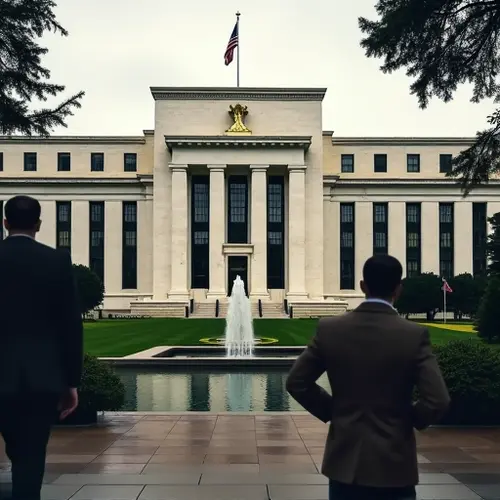Global inflation moderates in 2025 as central banks implement cautious rate cuts. The Fed, ECB and BoE adopt different approaches based on regional conditions. Consumers see mixed impacts with mortgage relief but stubborn credit card rates. Markets anticipate further easing amid structural economic shifts.

Global Inflation Moderates as Central Banks Pivot to Easing
Global inflation is showing signs of moderation in 2025, with consumer price increases expected to slow from the peaks seen in 2022-2023. After reaching nearly 9% in late 2022, global CPI inflation had roughly halved to below 5% by late 2024, and economists project further easing throughout 2025. 'We're seeing a gradual normalization of inflation pressures, but the journey back to 2% targets will be bumpy,' says Dr. Sarah Chen, chief economist at Global Financial Insights.
Divergent Central Bank Approaches
Major central banks are adopting different strategies based on their regional economic conditions. The Federal Reserve implemented its second consecutive rate cut in October 2025, lowering the federal funds rate to 3.75%-4.00%. 'The Fed is proceeding cautiously, balancing persistent inflation concerns against softening economic data,' notes Michael Rodriguez, senior analyst at MarketWatch Intelligence.
The European Central Bank has taken a more aggressive stance, cutting rates multiple times to counter economic stagnation in the eurozone. Meanwhile, the Bank of England reduced rates to 4.5% in February 2025, marking its third reduction since 2024. 'The BoE faces the delicate challenge of supporting growth while ensuring inflation doesn't reaccelerate,' explains Professor Emma Wilson of London School of Economics.
Consumer Impacts Across Financial Products
The effects of monetary policy changes are being felt unevenly across consumer financial products. Mortgage rates have shown significant improvement, with average 30-year fixed rates dropping to 6.27% from a 2025 high of 7.04%. However, 70% of current mortgage holders have rates below 5%, keeping the refinancing window closed for most homeowners.
Credit card rates remain stubbornly high at 20.03%, providing minimal relief for consumers carrying balances. 'A quarter-point Fed cut won't move the needle much for credit card holders drowning in debt,' observes financial advisor David Thompson.
Auto loan rates are generally fixed, but the rate environment could signal future financing incentives from lenders. For savings products, the picture is mixed - certificates of deposit and savings accounts offer lower returns, while money market funds may see modest improvements.
Market Expectations and Economic Outlook
Financial markets have responded positively to the prospect of continued monetary easing. The S&P 500 reached record highs following the latest inflation data, with money markets pricing in a 97% probability of additional Fed rate cuts. September 2025 CPI data showed moderated inflation with a 0.3% monthly increase and 3.0% annual rise, providing justification for further easing.
Regional disparities remain significant. Asia is projected to have the lowest inflation due to manufacturing capacity and sluggish Chinese demand, while sub-Saharan Africa faces the highest inflation pressures. The evolution of US trade policy represents a key risk to the interest rate outlook, potentially causing the Federal Reserve to pause easing while other central banks continue cutting rates.
Long-term Implications and Structural Shifts
The current monetary policy cycle is creating structural changes across global economies. In the UK, over 1 million households remain locked into higher-rate mortgage deals, creating uneven benefits from rate reductions. Consumer behavior shows increased savings at 2007 highs as households remain cautious despite the improving rate environment.
'We're witnessing a fundamental shift in how consumers approach debt and savings after the high-inflation period,' says Dr. Maria Gonzalez, director of consumer research at Financial Behavior Institute. 'The psychological impact of recent inflation spikes will influence financial decisions for years to come.'
Looking ahead, central banks face the challenge of navigating between supporting economic growth and maintaining inflation control. The current consensus suggests gradual, measured rate cuts throughout 2025, with monetary policy remaining tighter than pre-pandemic levels. As Dr. Chen concludes, 'The path forward requires careful calibration - too much easing risks reigniting inflation, while too little could undermine fragile economic recovery.'

 Nederlands
Nederlands
 English
English
 Deutsch
Deutsch
 Français
Français
 Español
Español
 Português
Português









